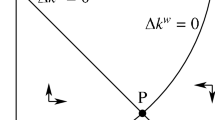Abstract.
This study uses a lineal-extinction-probability-minimization approach proposed by Chu (1991) to study the relation between bequest division and population growth. Using a Markov branching process and “first-degree stochastic dominance” technique, our model's results imply that any specific bequest division, primogeniture or equal divisions, does not necessarily increase or reduce the population growth by itself. Whether the population does grow, or by how much, will be determined by the concurrent social-economic conditions. We find that if all family heads faced an increasing MRTS technology and/or a relatively unfair market chance, then they would tend to choose an unequal division as their optimal bequest policy, and population growth would increase. However, if an equal division was adopted involuntarily by family heads or was enforced by laws, then the population growth might decline.
Similar content being viewed by others
Author information
Authors and Affiliations
Additional information
Received: 26 November 1999/Accepted: 26 October 2000
Rights and permissions
About this article
Cite this article
Lu, HC., Chen, M. & Chu, C. Bequest division and population growth: A lineal extinction probability approach. J Popul Econ 15, 243–259 (2002). https://doi.org/10.1007/s001480100085
Issue Date:
DOI: https://doi.org/10.1007/s001480100085




